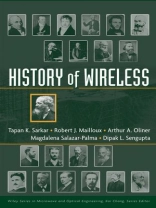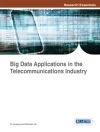Important new insights into how various components and systems
evolved
Premised on the idea that one cannot know a science without
knowing its history, History of Wireless offers a lively new
treatment that introduces previously unacknowledged pioneers and
developments, setting a new standard for understanding the
evolution of this important technology.
Starting with the background-magnetism, electricity, light, and
Maxwell’s Electromagnetic Theory-this book offers new insights into
the initial theory and experimental exploration of wireless. In
addition to the well-known contributions of Maxwell, Hertz, and
Marconi, it examines work done by Heaviside, Tesla, and passionate
amateurs such as the Kentucky melon farmer Nathan Stubblefield and
the unsung hero Antonio Meucci. Looking at the story from
mathematical, physics, technical, and other perspectives, the
clearly written text describes the development of wireless within a
vivid scientific milieu.
History of Wireless also goes into other key areas,
including:
* The work of J. C. Bose and J. A. Fleming
* German, Japanese, and Soviet contributions to physics and
applications of electromagnetic oscillations and waves
* Wireless telegraphic and telephonic development and attempts to
achieve transatlantic wireless communications
* Wireless telegraphy in South Africa in the early twentieth
century
* Antenna development in Japan: past and present
* Soviet quasi-optics at near-mm and sub-mm wavelengths
* The evolution of electromagnetic waveguides
* The history of phased array antennas
Augmenting the typical, Marconi-centered approach, History of
Wireless fills in the conventionally accepted story with
attention to more specific, less-known discoveries and individuals,
and challenges traditional assumptions about the origins and growth
of wireless. This allows for a more comprehensive understanding of
how various components and systems evolved. Written in a clear tone
with a broad scientific audience in mind, this exciting and
thorough treatment is sure to become a classic in the field.
Про автора
TAPAN K. SARKAR is a professor in the Department of
Electrical and Computer Engineering at Syracuse University.
ROBERT J. MAILLOUX is a retired senior scientist at the
Sensors Directorate, Air Force Research Laboratory, Hanscom AFB,
Massachusetts, and is currently Research Professor, University of
Massachusetts, Amherst.
ARTHUR A. OLINER is a University Professor Emeritus of
Polytechnic University (formerly the Polytechnic Institute of
Brooklyn). He is an elected member of the National Academy of
Engineering, the recipient of two honorary doctorates and many
prestigious awards, including two gold medals, and the coauthor of
about 300 papers and three books.
MAGDALENA SALAZAR-PALMA is a professor in the
Departamento de Teoria de la Seal y Communicaciones, at Univerdidad
Carlos III de Madrid (Spain). She has authored more than 260
publications in books, scientific journals, and symposium
proceedings.
DIPAK L. SENGUPTA is Emeritus Professor of Electrical and
Computer Engineering at the University of Detroit Mercy, and a
research scientist at the Radiation Laboratory, Department of
Electrical Engineering and Computer Science, the University of
Michigan, Ann Arbor. He is a Life Fellow of IEEE.












